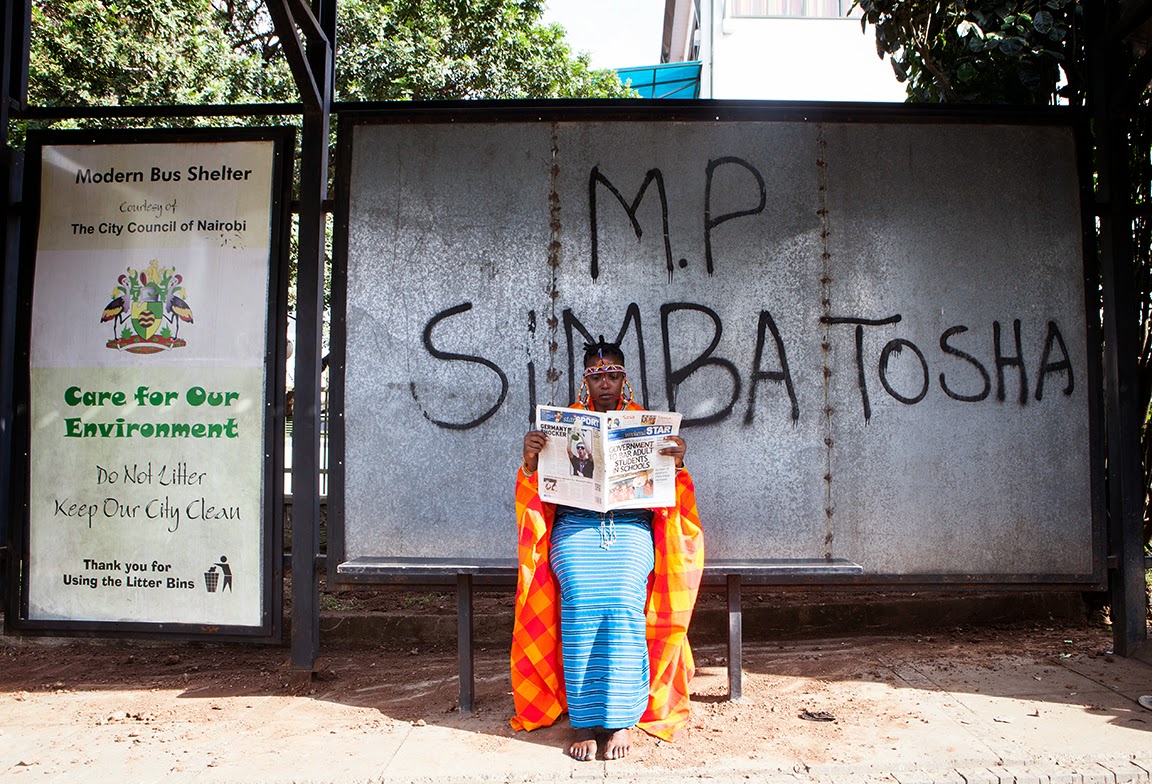
Weekly Roundup: “Through A Lens Darkly” In Theatres, Caribbean “Coolie” Women and More
Photo courtesy of the Digital Diaspora Family Reunion Flickr Photostream
US Theatrical Run for “Through a Lens Darkly”
Thomas Allen Harris’ “Through a Lens Darkly: Black Photographers and the Emergence of a People,” a Sundance Film Festival 2014 selection, will make its US theatrical premiere beginning Wednesday, August 27, presented by Film Forum (NYC), where it’ll enjoy a 2-week engagement. Watch the trailer.
 |
| Observations of Predation in Humans: A Lecture by Dr. Zira, 2013, performance at the Studio Museum in Harlem, courtesy of BOMB magazine. |
BOMB Magazine Interview with Coco Fusco by Elia Alba
Multidisciplinary artist and writer Elia Alba interviews the award-winning, often-controversial, deeply-political, Cuban artist Coco Fusco. Among other subjects, the artists discuss Fusco’s latest performance work inspired by a main character in the Planet of the Apes TV series. With this work Fusco claims she’s “suggesting that the balance in human society has shifted away from empathy toward aggressively individualistic behavior.”
 |
| East Indian Immigrants, British Guiana, 1870-1931, The National Archives, United Kingdom. |
New Book Documents the Journey of the Caribbean’s “Coolie” Women
In the 2014 book Coolie Woman: The Odyssey of Indenture by Gaiutra Bahadur, the author tells the story of a quarter of a million Indian women who left their country for the Caribbean under the British system of 20th century indentureship.
Telling her own family story, Bahadur “charts the journey of her great-grandmother Sujaria who embarked on her own ‘middle passage,’ alone and three months pregnant, for some dream of a better life. However, what she met in Guyana in 1903 (then British Guiana) was a burgeoning culture of violence, sexual exploitation, and harsh labor. And yet, Sujaria’s story is not a single, one-dimensional story of victimization. Instead, Bahadur finds the triumphs, cunning, and resilience in these women.”
Bahadur’s book reaches back in time through a technique she uses called “Ekphrasis”, a method of narration through descriptions of art. She uses photography (like the image above) and descriptions of photographs to honor these (forgotten) women, evoke memory and speak to the formation of immigrant identities. For more about the author’s research into this subject and her use of historical photographs, check out this interview with Bahadur via Of Note Magazine.
 |
| “Traditional vs. Modern” from the Continental Africa Series, Nairobi, Kenya July 2014. Copyright Delphine Fawundu |
Deconstructing SHE Tumblr by Delphine Fawundu
A “public art installation” by the artist/photographer Delphine Fawundu, Deconstructing SHE is a Tumblr blog you definitely want to follow. Though mostly self portraits, Fawundu’s images flow like an album of women from the diaspora, moving from studio to street.
Statement from the artist: Deconstructing SHE examines the theory of social constructivism in the development of identity. What impact do post Trans Atlantic Slave Trade and postcolonial societies have on the development of social constructs such as “race,” “gender,” and “class?” How valid are these constructs as reflected in personal identity? Through this performance art series of silent monologues, Delphine Fawundu transforms herself into various personalities as she delves into this investigation of self and society.
 |
| From the Britain Loves Africa series Copyright Briony Campbell |
Briony Campbell’s Britain Loves Africa project
Featured last month on the inspiring Firecracker website dedicated to supporting the work of women photographers in Europe, this project by Campbell captures “relationships between Britons and Africans living in Uganda, Tanzania and Ethiopia over two years.” Campbell says the work questions whether marrying locals is a way for the British to assimilate into African culture.
_________________________________________________________________________________
Dodge & Burn is a blog dedicated to documenting a more inclusive history of photography and supporting the work of photographers of color with photographer interviews.
This blog is published by visual artist and writer, Qiana Mestrich. For regular updates on diversity in photography history, follow Qiana on Twitter @mestrich, Like the Dodge & Burn Blog page on Facebook or subscribe to Dodge & Burn by email.
You must be logged in to post a comment.

+ There are no comments
Add yours